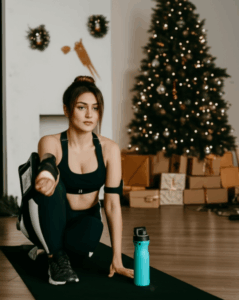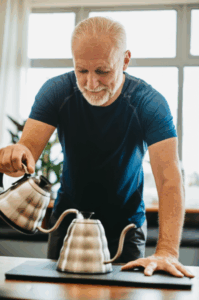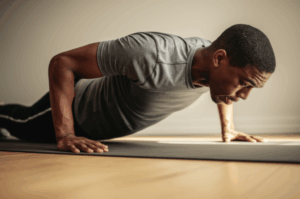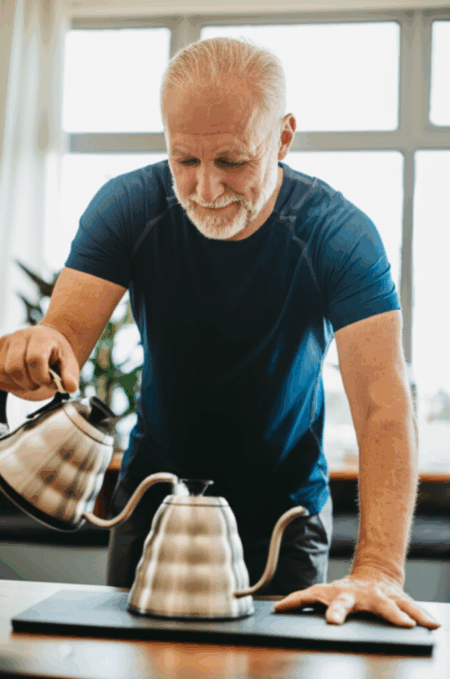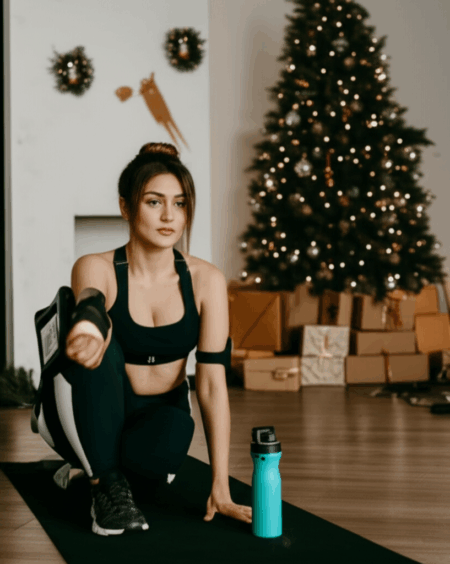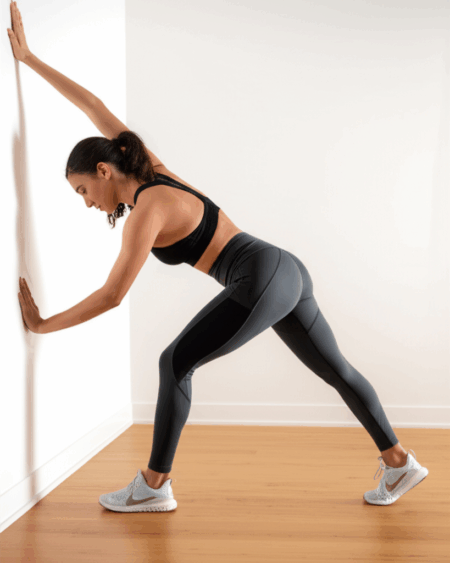Vivek Dahiya, the popular television actor known for his roles in “Yeh Hai Mohabbatein” and “Qayamat Ki Raat,” recently shared a glimpse into his intense fitness regimen, leaving fans both impressed and motivated. Dahiya posted a video on Instagram showcasing his dedication to fitness, specifically highlighting a grueling leg workout that included a staggering 500 squats. This article delves into the details of his workout, the importance of squats, and how you can incorporate them safely into your own fitness journey.
Decoding Vivek Dahiya’s Squat Challenge
In early May 2025, Vivek Dahiya took to Instagram to share his “crushing leg workout,” as he described it. The video revealed that this routine followed a set of 500 squats, leaving him feeling completely “DONE!” While the specific exercises in the video weren’t detailed, the emphasis on completing such a high volume of squats demonstrates Dahiya’s commitment to lower body strength and endurance.
The Allure of the Squat: Why It’s a Fitness Staple
The squat is a foundational exercise, often hailed as the king of all exercises, and for good reason. It’s a compound movement, meaning it works multiple muscle groups simultaneously. Here’s a breakdown of why squats are so beneficial:
- Full-Body Engagement: Squats primarily target the quadriceps, hamstrings, and gluteal muscles. However, they also engage your core, lower back, and even your calves to a lesser extent.
- Strength and Muscle Building: Regular squatting promotes muscle hypertrophy (growth) in the legs and glutes, leading to increased strength and power.
- Improved Functional Fitness: Squats mimic everyday movements like sitting, standing, and lifting. Strengthening these movement patterns makes daily activities easier and reduces the risk of injury.
- Enhanced Bone Density: Weight-bearing exercises like squats help to increase bone mineral density, reducing the risk of osteoporosis.
- Calorie Burning: As a compound exercise, squats burn a significant number of calories, contributing to weight management.
- Improved Athletic Performance: Squats can enhance athletic performance by increasing lower body power, jump height, and running speed.
Different Squat Variations
While Vivek Dahiya’s workout focused on a high volume of squats, it’s important to note that there are numerous variations to target different muscles and accommodate various fitness levels. Here are some popular squat variations:
- Bodyweight Squat: The most basic form, perfect for beginners. Focus on proper form and depth.
- Goblet Squat: Holding a dumbbell or kettlebell close to your chest increases core engagement and improves squat depth.
- Front Squat: Holding a barbell across the front of your shoulders emphasizes the quadriceps and upper back.
- Back Squat: The classic barbell squat, performed with the barbell across your upper back. This variation allows for the heaviest loads and greatest overall strength gains.
- Overhead Squat: Holding a barbell overhead requires significant mobility, stability, and core strength.
- Jump Squat: An explosive variation that adds a jump at the top of the movement, increasing power and calorie burn.
- Bulgarian Split Squat: A single-leg exercise where the rear foot is elevated on a bench, challenging balance and targeting each leg individually.
- Pistol Squat: An advanced single-leg squat that requires significant strength, balance, and flexibility.
- Sumo Squat: A wide-stance squat that emphasizes the inner thighs and glutes.
Replicating Vivek’s Workout: A Gradual Approach
Attempting 500 squats right off the bat is not recommended, especially for beginners. It’s crucial to gradually increase the volume and intensity of your workouts to avoid injury and burnout. Here’s a suggested progression:
- Start with Bodyweight Squats: Master the basic bodyweight squat before adding weight or complexity. Focus on proper form: feet shoulder-width apart, chest up, back straight, and descending as if sitting into a chair. Aim for 3 sets of 10-15 repetitions.
- Introduce Variations: Once you’re comfortable with bodyweight squats, experiment with goblet squats or other variations to challenge your muscles in different ways.
- Add Weight: If you’re aiming for strength gains, gradually add weight using dumbbells, kettlebells, or a barbell. Ensure you have proper form before increasing the load.
- Incorporate Sets and Reps: As you get stronger, gradually increase the number of sets and reps. A good starting point is 3 sets of 8-12 repetitions with a challenging weight.
- Listen to Your Body: Rest and recovery are crucial for muscle growth and injury prevention. Don’t push yourself too hard, especially when starting. If you experience pain, stop and consult a healthcare professional.
- Progressive Overload: The key to continued progress is progressive overload. This means gradually increasing the demands on your muscles over time, whether by adding weight, increasing reps, or trying more challenging variations.
Sample Squat Workout Plan:
This is a sample plan and should be adjusted based on individual fitness levels and goals:
Week 1-2: Building a Foundation
- Bodyweight Squats: 3 sets of 10-15 reps
- Goblet Squats: 3 sets of 8-12 reps (light weight)
- Rest: 60-90 seconds between sets
- Frequency: 2-3 times per week
Week 3-4: Increasing Intensity
- Back Squats (Barbell): 3 sets of 8-12 reps (light weight)
- Bulgarian Split Squats: 3 sets of 10-12 reps per leg
- Rest: 75-90 seconds between sets
- Frequency: 2-3 times per week
Week 5-6: Adding Volume and Complexity
- Back Squats (Barbell): 4 sets of 8-10 reps (moderate weight)
- Front Squats (Barbell): 3 sets of 8-10 reps (light weight)
- Jump Squats: 3 sets of 10-15 reps
- Rest: 75-90 seconds between sets
- Frequency: 3 times per week
Important Considerations
- Proper Form is Paramount: Never sacrifice form for weight or reps. Watch videos, consult a trainer, and practice in front of a mirror to ensure you’re performing squats correctly.
- Warm-up Properly: Before squatting, perform a dynamic warm-up that includes movements like leg swings, hip circles, and torso twists.
- Cool-down and Stretch: After your workout, cool down with light cardio and stretch your quadriceps, hamstrings, and glutes.
- Nutrition is Key: Fuel your body with a balanced diet that supports muscle growth and recovery. Protein is especially important for muscle repair.
- Listen to Your Body: Pay attention to any pain or discomfort and adjust your workout accordingly.
Is 500 Squats Realistic?
While Vivek Dahiya’s 500-squat workout is impressive, it’s essential to consider that he is a trained individual with a solid fitness base. For the average person, aiming for 500 squats in one session may be excessive and potentially dangerous. It’s more realistic and sustainable to gradually increase the volume over time and prioritize proper form and recovery.
Listen to the Experts:
It is important to be aware of the risks of doing a high number of squats without proper guidance. As one commenter on an article about Vivek Dahiya’s workout pointed out, “As a fitness trainer, I must say 500 squats without proper guidance can be dangerous for joints.”
Beyond Squats: A Holistic Approach to Fitness
While squats are a fantastic exercise, they’re just one piece of the puzzle. A well-rounded fitness routine should include a variety of exercises that target all major muscle groups, as well as cardiovascular training and flexibility work.
- Cardio: Incorporate activities like running, swimming, cycling, or dancing to improve cardiovascular health and burn calories.
- Strength Training: Include exercises for your upper body, such as push-ups, pull-ups, rows, and overhead presses.
- Core Work: Strengthen your core with exercises like planks, crunches, and Russian twists.
- Flexibility: Practice stretching or yoga to improve flexibility and range of motion.
Vivek Dahiya: More Than Just a Fitness Enthusiast
Vivek Dahiya’s dedication to fitness is evident not only in his workout videos but also in his overall lifestyle. His wife, actress Divyanka Tripathi Dahiya, has spoken about how he inspires those around him and helps her with her fitness goals.
Dahiya’s fitness journey serves as an inspiration to his fans, demonstrating that with dedication and consistency, it’s possible to achieve impressive fitness feats. However, it’s important to remember that everyone’s fitness journey is unique, and it’s crucial to listen to your body and progress at your own pace.
Conclusion:
Vivek Dahiya’s intense 500-squat workout is a testament to his commitment to fitness. While replicating his exact routine may not be feasible or advisable for everyone, it serves as a powerful reminder of the benefits of squats and the importance of a well-rounded fitness regimen. By gradually increasing the volume and intensity of your workouts, prioritizing proper form, and listening to your body, you can safely and effectively incorporate squats into your fitness journey and reap the rewards of a stronger, healthier you.

